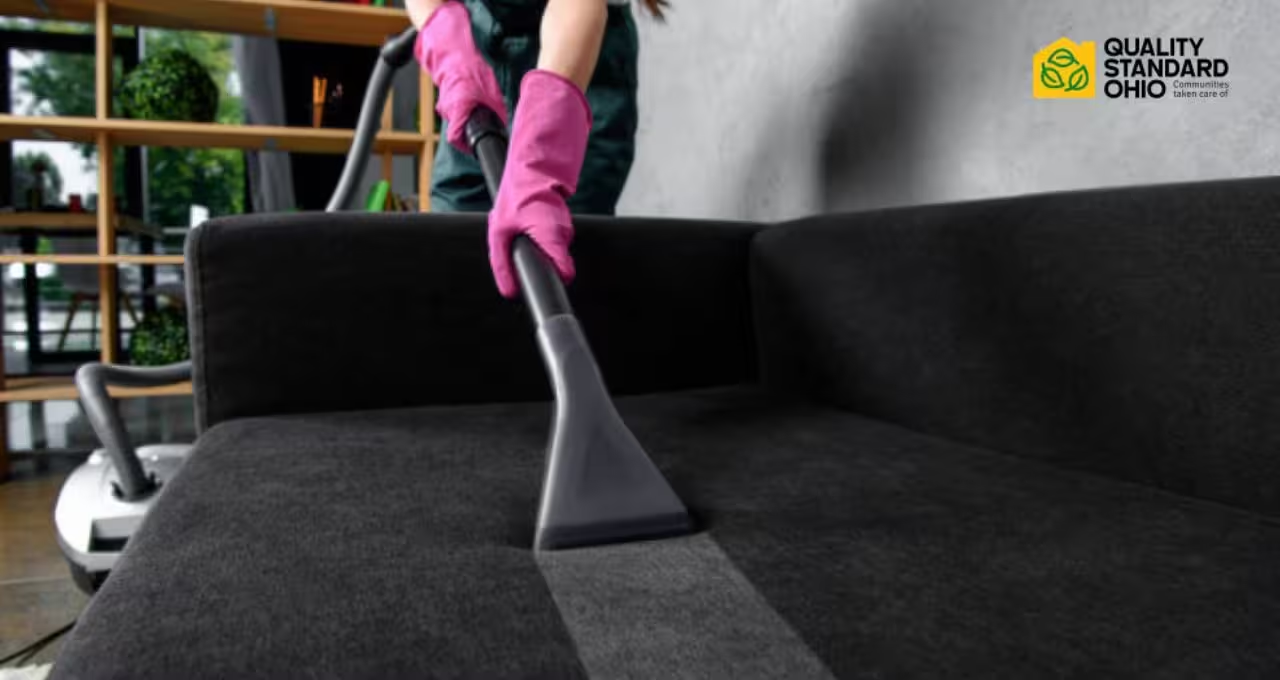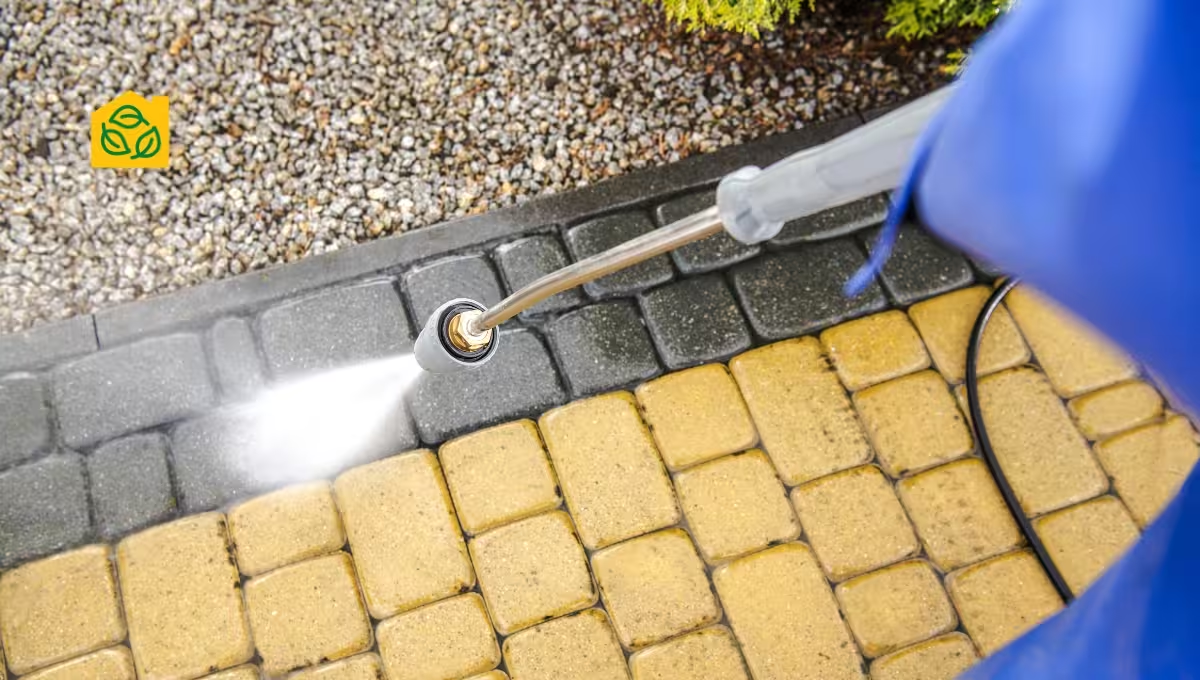Let’s talk about something many homeowners overlook: proper upholstery care.
That expensive sofa you carefully selected. The dining room set you’re still making payments on. Your favorite armchair you can’t imagine living without.
Here’s the uncomfortable truth: You might be inadvertently damaging them through improper cleaning methods.
But don’t worry. This guide will show you exactly how to care for your upholstery at home and, more importantly, when DIY methods aren’t enough and it’s time for professional upholstery cleaning.
Why DIY upholstery cleaning isn’t always enough
First, let’s address a common misconception: Basic vacuuming alone doesn’t constitute proper upholstery maintenance.
Consider what your furniture absorbs daily:
Body oils, food particles, pet dander, dust mites, spilled beverages, and airborne contaminants don’t just sit on the surface—they penetrate deep into upholstery fibers.
Over time, these substances break down fabric integrity, leading to premature wear and deterioration. When DIY methods fail to remove these deeply embedded contaminants, it may be time for professional upholstery cleaning service.
Effective DIY upholstery cleaning techniques
Before calling professionals, here are proper DIY upholstery cleaning methods to try:
First, use the right vacuum attachments—not just any vacuum will do.
Essential tools for DIY upholstery cleaning:
- Upholstery-specific vacuum attachment
- Crevice tool for seams and edges
- Soft brush attachment for delicate fabrics
Follow this methodical approach for proper DIY cleaning:
Remove all cushions completely to access hidden debris.
The amount of dirt lurking beneath cushions might surprise you.
Use the crevice tool along seams and corners—these areas trap the most contaminants.
Daily upholstery maintenance habits
Quick maintenance tip: Consider using protective covers on high-wear areas. Yes, they might seem old-fashioned, but there’s a reason previous generations’ furniture lasted decades.
Focus DIY upholstery protection on these high-impact areas:
- Armrests where oils from hands accumulate
- Headrests that collect hair products and oils
- Seat cushions bearing the most weight and friction
When to call for professional upholstery cleaning
Now, let’s address when DIY upholstery cleaning reaches its limits.
Those stubborn stains that resist your best cleaning attempts?
Those require professional-grade upholstery cleaning services.
Here’s what happens during professional upholstery cleaning that DIY methods can’t match:
Professional upholstery assessment
Professional cleaners don’t immediately apply cleaning solutions.
First, they conduct a thorough evaluation:
- Identifying specific fabric composition
- Locating problem areas beyond visible stains
- Determining the optimal cleaning approach
- Assessing potential risks based on fabric type
This assessment is crucial because inappropriate cleaning methods can permanently damage upholstery.
Professional technicians have seen the consequences of improper DIY cleaning attempts.
Pre-treatment: The professional difference
An important fact about effective upholstery cleaning: proper chemical reactions require adequate dwelling time.
Science matters in professional cleaning.
Professional upholstery cleaning services use specialized spotting solutions that:
- Chemically break down stain molecules
- Loosen embedded soil particles
- Prepare fibers for extraction
The professional advantage: Technicians know precisely how long to allow products to work.
Too brief? Stains will reappear. Too extended? Fabric damage may occur.
Professional cleaning methods vs. DIY approaches
Here’s what professional-grade upholstery cleaning actually involves:
Hot water extraction for synthetic upholstery fabrics. Dry cleaning methods for delicate natural materials. Specialized processes for leather upholstery.
The value proposition: When hiring professionals, you’re not just paying for cleaning products but for years of expertise in selecting the optimal approach for each specific material type.
Common DIY upholstery cleaning mistakes
Want to know why some furniture deteriorates prematurely despite cleaning attempts?
Improper DIY cleaning techniques.
Here are common mistakes to avoid:
Excessive moisture application. Furniture padding isn’t designed to handle saturation.
Aggressive scrubbing actions. This pushes stains deeper rather than removing them.
Using too much cleaning product. More cleaning solution doesn’t equate to better results.
When professional upholstery cleaning becomes necessary
Be honest—is your furniture exhibiting:
Visible indicators:
- Persistent stains resistant to DIY methods
- Lingering odors despite cleaning attempts
- Color changes or fabric discoloration
- Flattened or compressed upholstery texture
Hidden concerns:
- Dust mite infestations (invisible but harmful)
- Allergen accumulation affecting household health
- Deep-set contaminants beyond surface appearance
- Structural fiber weakening
Schedule a professional assessment
The hidden cost of delaying professional cleaning
Here’s an important perspective many furniture owners discover too late:
That $100-200 “saved” by postponing professional upholstery cleaning?
It frequently results in thousands spent on premature furniture replacement.
This pattern repeats consistently among homeowners.
What professional upholstery service includes
When you choose our professional upholstery cleaning:
Complete pre-cleaning inspection and material testing. Professional stain removal and deep extraction cleaning. Optional fabric protection treatment. Post-cleaning quality assessment.
Maintaining upholstery between professional cleanings
Want to protect your furniture investment? Follow these proven maintenance strategies:
Weekly DIY maintenance: Vacuum properly using appropriate attachments, paying special attention to crevices.
Monthly upholstery care: Rotate cushions when possible and inspect for developing issues.
Immediate spill response: Address spills promptly—but avoid rubbing actions!
Emergency spill response guide
When accidents happen, follow these steps:
- Blot (never rub) using clean, white absorbent cloth
- Avoid applying random household cleaning products
- Contact professionals for serious spills or stains
Emergency upholstery cleaning service
Balanced upholstery care approach
You now have two complementary options:
-
Apply these DIY techniques for regular maintenance
-
Partner with professional upholstery cleaners for periodic deep cleaning
Remember: Quality furniture represents a significant investment. Protecting that investment through proper care makes financial sense.
Don’t wait until stains become permanent. Implement proper maintenance now.
Want more home care advice? Read our guide on professional air duct cleaning to maintain healthy indoor air quality.

